
Duke Nukem 3D is a first-person shooter video game developed by 3D Realms. It is a sequel to the platform games Duke Nukem and Duke Nukem II, published by 3D Realms.
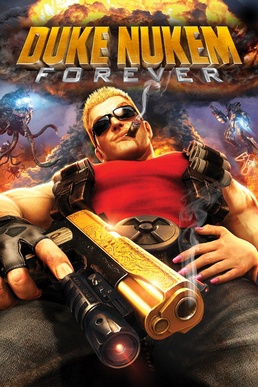
Duke Nukem Forever is a 2011 first-person shooter game developed by Gearbox Software and published by 2K for Windows, PlayStation 3, Xbox 360 and Mac OS X. It is the fourth main installment in the Duke Nukem series and the sequel to Duke Nukem 3D (1996). Players control Duke Nukem as he comes out of retirement to battle an alien invasion. Like its predecessor, Duke Nukem Forever features pop culture references, toilet humor, and adult content.
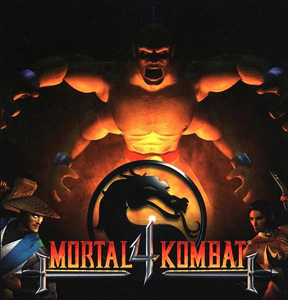
Mortal Kombat 4 is the fourth main installment in the Mortal Kombat series of fighting games developed by Midway Games. Released to arcades in 1997, Mortal Kombat 4 is the first title from the series, and one of the first made by Midway overall, to use 3D computer graphics. It is also the last game of the series to have an arcade release. It was later ported to the PlayStation, Nintendo 64, PC, and Game Boy Color the following year, as well as an updated version titled Mortal Kombat Gold released exclusively for the Dreamcast.

Duke Nukem: Manhattan Project is a platform game developed by Sunstorm Interactive, produced by 3D Realms, and published by Arush Entertainment. It was released on Microsoft Windows on May 14, 2002, in North America and on June 14, 2002, in Europe. A port of the game would be released for the Xbox 360 on June 23, 2010, by 3D Realms directly, followed by an iOS port on January 9, 2014.

Vigilante 8 is a 1998 vehicular combat game developed by Luxoflux and published by Activision for PlayStation, Nintendo 64, and Game Boy Color. Although officially it has no connection to Activision's Interstate '76 series, it features several of its themes including auto-vigilantes, the 1970s time frame, and specific fictional vehicle companies. Its home console versions received favorable reviews, and it was followed up by Vigilante 8: 2nd Offense in 1999. A remake was released as Vigilante 8 Arcade in 2008.
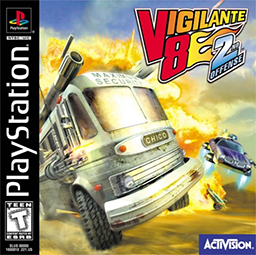
Vigilante 8: 2nd Offense is a vehicular combat game developed by Luxoflux and published by Activision for PlayStation, Dreamcast and Nintendo 64. It is the sequel to Vigilante 8.
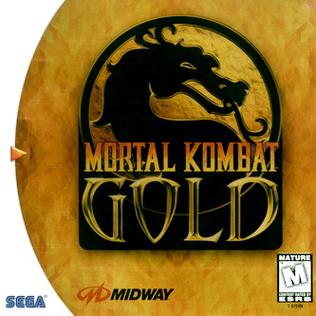
Mortal Kombat Gold is a 1999 fighting game in the Mortal Kombat series that was published by Midway Home Entertainment. It was developed by Eurocom and released exclusively on the Dreamcast as a launch title. It is an updated version of 1997's Mortal Kombat 4 and was the first game to appear on a sixth-generation platform as well as the only Mortal Kombat game to be released for the Dreamcast console. Critical reaction was mostly average due to the graphics being inferior to the arcade version, the weapons deemed boring or useless, and game-breaking bugs and glitches.

Fighting Force is a 1997 3D beat 'em up developed by Core Design and published by Eidos. It was released for PlayStation, Microsoft Windows, and Nintendo 64. Announced shortly after Core became a star developer through the critical and commercial success of Tomb Raider, Fighting Force was highly anticipated but met with mixed reviews.
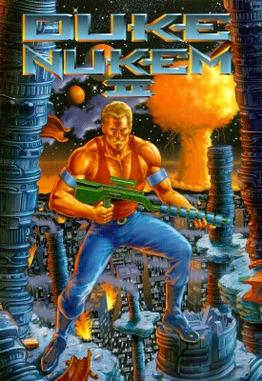
Duke Nukem II is a 1993 platform game developed and published by Apogee Software. The game consists of four episodes, the first available as shareware. It is the follow-up to 1991's Duke Nukem, and followed by Duke Nukem 3D in 1996. Todd Replogle was the primary designer of all three games.
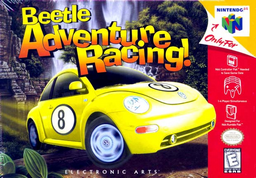
Beetle Adventure Racing! is a racing game released for the Nintendo 64 in 1999. It was developed by Paradigm Entertainment and EA Canada, and published by Electronic Arts. Each vehicle in the game is a Volkswagen New Beetle, which was released the previous year. The gameplay involves racing other players on unlocked tracks, finding and destroying crates, and collecting colored ladybugs while battling other players. The single-player championship offers three circuits and a secret bonus circuit with new vehicles and tracks available upon completion.
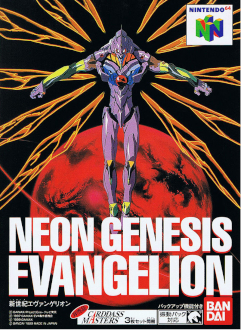
Neon Genesis Evangelion, also referred to as Neon Genesis Evangelion 64, is a 1999 fighting game released for the Nintendo 64 in Japan by Bandai. It is based on the Gainax anime series Neon Genesis Evangelion and the 1997 film that serves as its conclusion, The End of Evangelion. Players control a mech named Evangelion Unit 01 to destroy a race of aliens known as the Angels before they eradicate the rest of the human race. The game is known for its alterations to the source material in order to make its dystopian and unsettling atmosphere suitable for an action game, and features unique endings and plotlines not present in other Evangelion media.
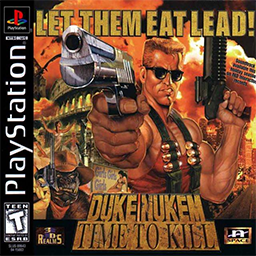
Duke Nukem: Time to Kill is a third-person shooter video game developed by n-Space and published by GT Interactive for the PlayStation.

Duke Nukem: Land of the Babes is a third-person shooter video game developed by n-Space and published by Infogrames. It is a spin-off of 3D Realms' Duke Nukem series of video games.
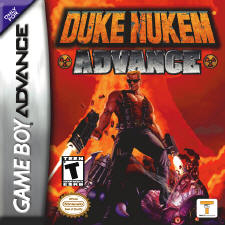
Duke Nukem Advance is a video game in the Duke Nukem series, released for the Game Boy Advance. Although it is a first-person shooter and many of the graphics and sounds have been ported from Duke Nukem 3D, the game has an original storyline and levels.
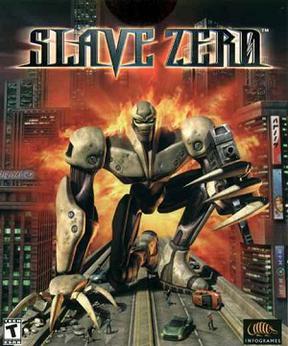
Slave Zero is a 1999 action video game developed and published by Infogrames North America.
Duke Nukem is a media franchise named for its main character, Duke Nukem. Created by the company Apogee Software Ltd. as a series of video games for personal computers, the series expanded to games released for various consoles by third-party developers. The first two games in the main series were 2D platformers, while the later games have been a mix of first-person and third-person shooters.
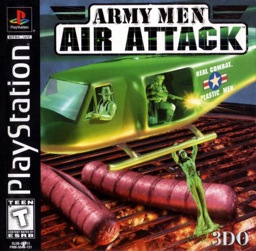
Army Men: Air Attack is a third-person shooter video game developed and published by The 3DO Company for PlayStation, Nintendo 64, Game Boy Color and Microsoft Windows. The game focuses on aerial combat and features the same protagonist, Cpt. William Blade. It is one of the first Army Men games to be powered by a 3D engine where terrain and units are rendered in real-time.
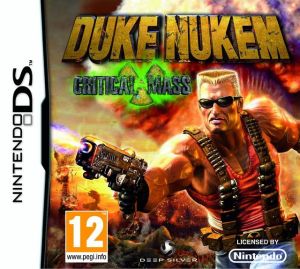
Duke Nukem: Critical Mass is a shooter game developed by Frontline Studios and published by Deep Silver and Apogee Software, LLC for the Nintendo DS. A version for the PlayStation Portable began development, but it was never released.

BoomBots is a fighting game released in 1999 for PlayStation. It was created by Doug TenNapel, developed by The Neverhood, Inc., and published by SouthPeak Interactive. BoomBots features distinctive claymation visuals and various amounts of toilet humor. The game was both a critical and commercial failure. It was the third and final game made by the Neverhood, Inc. before the company folded in 1999 after the game's release.

















